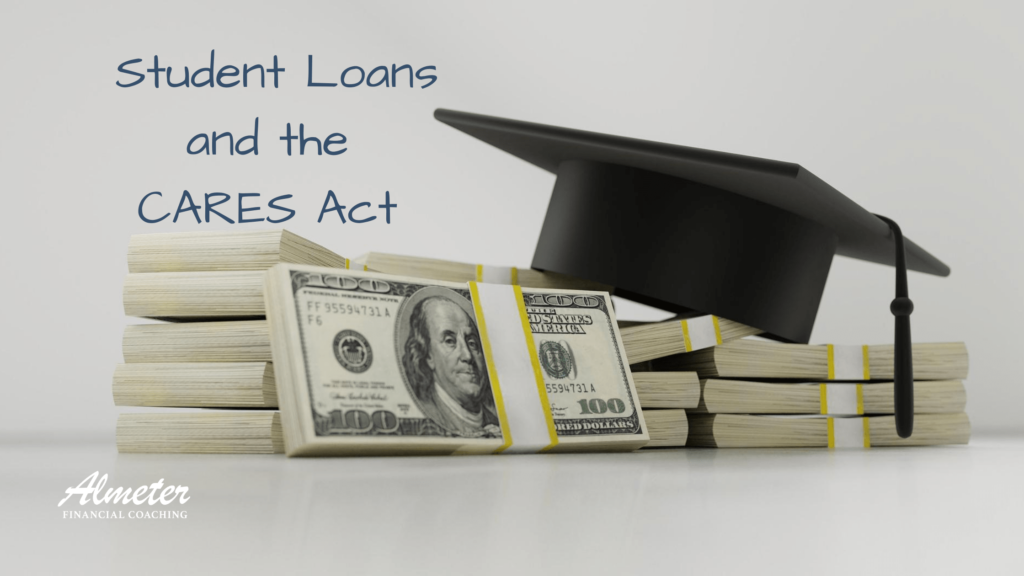Are you taking advantage of the temporary forbearance and 0% interest on your student loans? Do you know if your loans even qualify under the CARES Act?
What is the CARES Act?
After the Coronavirus pandemic hit in March the president passed the Coronavirus Aid, Relief and Economic Security Act (CARES) Act to help Americans financially. The CARES Act funded taxpayers’ stimulus checks, small businesses, unemployment, hospitals and local government. It also put all federally funded student loans on forbearance.
How does it impact student loans?
Federal student loans, which include Direct Stafford Loans, Direct Parent Plus Loans, and Direct Consolidation Loans were put on a temporary forbearance. Forbearance simply means that payments are temporarily stopped due to economic hardship.
Interest rates on the qualified loans were also set to 0%. Typically interest accrues during the forbearance period and any interest accrued is owed when the forbearance term is over. With the CARES Act interest will not accrue.
The forbearance term was originally set from March 2020 to September 30, 2020 but was extended in August to December 31, 2020. Unless it is extended again, payment plans will reinstate as usual. So if you have gotten used to using that money elsewhere be prepared for student loan payments to start up again in January 2021.
How do I know if my loans qualify?
Student loans under the CARES Act only apply to federally funded student loans, not private loans. You will have to check your specific loans to see if they are federal or private loans. Federal loans are backed by the government while private loans come directly from a bank.
You will also want to check to make sure qualified loans were actually put on forbearance. If you have automatic payments set up they should not be taking those automatic withdrawals.
During the CARES Act forbearance period lenders should not be reporting you to credit bureaus for loss of payment. Check your credit report to ensure this is the case.
How to take advantage of the temporary forbearance.
If you have been trying to pay off student debt before the Coronavirus pandemic there are a few ways you can use the forbearance to your advantage. It will depend on your specific situation but here are some things to think about.
Situation 1: Your income is stable and you have not lost any income.
If your income has not been affected and you are confident your job is stable then this is a great time to gain some traction on paying off your student loans! Automatic payments on qualified loans should have stopped but you can still make extra payments manually. This is a great option because any payment you make will go directly towards the principle, which will decrease your balance.
If you have private loans that are not in forbearance then another option is to apply extra payments to those loans. You can use the money that would have normally gone to federal loan payments towards your private loan payments. This will help save on interest!
Situation 2: Your income has not been stable and you lost some or all of your income.
If you lost some or all of your income due to temporary layoff, now is the time to press pause on paying off those loans. Focus on covering necessities at this time; food, shelter, utilities and transportation. Continue to make any minimum payments on debts without applying extra payments. You want to have enough money to cover necessities but you don’t want to get behind on payments either.
How to pay off your student loans using the debt snowball.
Whether you are tackling your student loans now or waiting until your income is stable again, the best way to pay them off is by using the debt snowball method. To do this you simply list all your loans from smallest balance to largest balance (no matter what the interest rate is). You will start by applying an extra payment towards the smallest loan first. This gives you a quick win and momentum to knock out those loans one by one.
You can use the debt snowball method if you are paying extra on the 0% interest loans or your loans with an interest rate. I love using debt snowball calculators to give me a timeline on when it will be all paid off. Try plugging in your numbers here.
The best way to get a handle on where all your money is going is by completing a written budget each month. Seeing your numbers written down gives you clarity and where your money is going. Not sure where to start? Make your first budget today with the help of Give Yourself a Raise! Making a budget is the first step to creating your student loan payoff plan!

